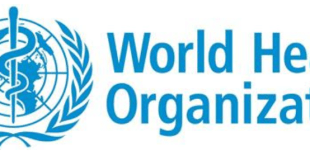21 April 2023
Situation at a glance
This Disease Outbreak News is an update on the report published on 6 April 2023 concerning human infection caused by avian influenza A(H5N1) in Chile. Since then, WHO received information on the results of genomic sequencing and the ongoing public health response.
On 5 April, the results of genomic sequencing were completed by the Institute of Public Health of Chile (ISP per its acronym in Spanish), which is the National Influenza Centre (NIC) in Chile, which identified avian influenza virus A(H5N1) phylogenetic clade 2.3.4.4b. The genomic sequencing had 99.9% identity with H5 hemagglutinin sequences from Chilean birds, and complete neuraminidase (NA) had 100% identity with N1 sequences from Chilean birds.
A total of 12 contacts (close contacts and healthcare workers) were identified. All tested negative for influenza and have completed the monitoring period. No further cases in Chile have been identified so far.
Avian influenza infection in a human can cause severe disease and is notifiable under the International Health Regulations (IHR, 2005) [1].
Description of the case
As reported previously, on 29 March 2023, the Ministry of Health of Chile notified WHO of the detection of human infection with avian influenza A(H5) virus.
On 7 April 2023, the Chile International Health Regulations National Focal Point reported the results of genomic sequencing completed on 5 April 2023 by the NIC, which identified avian influenza A(H5N1) phylogenetic clade 2.3.4.4b.
The patient is a 53-year-old male from the Region of Antofagasta in the north of Chile. He had no history of comorbidities or recent travel.
On 13 March 2023, the patient developed symptoms including cough, sore throat, and hoarseness. On 21 March, due to worsening symptoms, he sought care at a local hospital. On 22 March 2023, the patient developed dyspnea and was admitted to a Regional Hospital at Antofagasta (SARI Sentinel Site). A nasopharyngeal swab sample was collected as part of routine severe acute respiratory infection (SARI) surveillance and tested negative for SARS-CoV-2 by reverse transcription-polymerase chain reaction (RT-PCR). On 23 March, the patient was admitted to the intensive care unit and treatment with antivirals (oseltamivir) and antibiotics was initiated. The patient remains in respiratory isolation under multidisciplinary management, with mechanical ventilation due to pneumonia. Standard infection control precautions were kept since the detection of the case.
On 27 March, a bronchoalveolar sample was collected and tested positive for an unsubtypeable influenza A virus by PCR. The sample was sent to the ISP and tested positive for avian influenza A(H5) on 29 March. On 31 March, the NIC forwarded the patient’s samples to a WHO Collaborating Centre for further characterization.
On 5 April, the results of genomic sequencing were completed by the NIC in Chile, which identified avian influenza virus A(H5N1) phylogenetic clade 2.3.4.4b. The genomic sequencing had 99.9% identity with H5 hemagglutinin sequences from Chilean birds, and complete neuraminidase (NA) had 100% identity with N1 sequences from Chilean birds.
Three close contacts of the case were identified, all asymptomatic, tested negative for influenza and have concluded the monitoring period. Additionally, a total of nine contacts among healthcare workers were identified, all tested negative for influenza and concluded the monitoring period on 4 April. However, on 5 April one of them developed respiratory symptoms, therefore a nasopharyngeal swab was taken, which tested negative for influenza; the monitoring period for this contact was extended for seven additional days, ending on 11 April.
Avian influenza A (H5N1) was first detected in the Region of the Americas in birds in December 2014. Between December 2022 and February 2023, highly pathogenic avian influenza (HPAI) has been detected in wild aquatic birds (pelicans and penguins) and sea mammals (sea lions) in the Antofagasta Region where the case resides. According to preliminary findings of the epidemiological investigation of this human case, the most plausible route of transmission was through environmental exposure, given the large number of dead sea mammals and wild birds found in the area close to the patient´s residence.
 Newspatrolling.com News cum Content Syndication Portal Online
Newspatrolling.com News cum Content Syndication Portal Online





